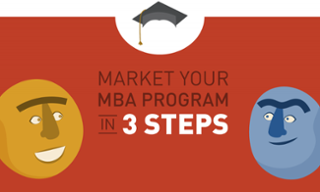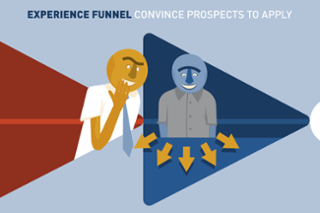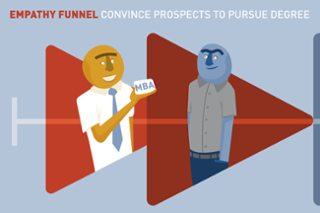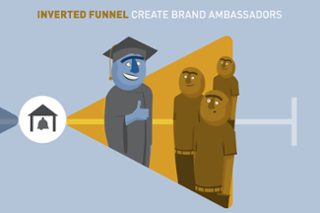2017-02-08T10:47:00+00:00
https://www.z-comm.com/userfiles/16ZBIZ092_BizSchoolInfographic_R1_1-Title-618255-edited.png
Zehnder Communications, Inc.

2024-07-27T06:58:14+00:00
The 3 Step Multi-funnel Marketing Method for Marketing MBA and EMBA Programs
Posted By Jennifer Boneno
Vice President of Client Development
Almost anyone in communications is familiar with the concept of the marketing funnel. The marketing funnel, as you probably know, helps move consumers from an early awareness phase, through education and comparison phases, and toward a purchase or conversion phase. Marketers deliver targeted messages at each point in the funnel, addressing consumers’ concerns as they journey through the decision-making process.At Zehnder, we’re firm believers in the funnel — most of the time.
One exception is when it comes to marketing an MBA program. In this case, we think that it takes more than just one funnel to fill up a classroom with satisfied students. To ultimately settle on an MBA program, prospective students must journey through two separate funnels — and ideally “invert” afterwards to attract even more prospects. We call this the multi-funnel method. Learn more about it below.
The Multi-Funnel Method: Step by Step
After working with a number of clients in higher education and MBA programs, we realized that many universities were missing the mark on a key part of prospective students’ journey — the awareness and interest phases. Instead of focusing on prospective students’ initial concerns (like whether a graduate degree is a right fit for their professional and personal goals), programs focus more on end-of-funnel messaging (like how their test scores compared to other schools’ scores).
Digging deeper into this issue, it became clear that the decision-making journey for prospective MBA students simply can’t be distilled into a single marketing funnel — because if you’re only marketing to students who are considering and comparing specific MBA programs, instead of considering an MBA or EMBA in general, you’re missing out on a large part of the prospective student market. Furthermore, the diversity of target audiences for MBA programs (ranging from experienced executives to current undergraduate students), the complexity of the MBA decision, and the high costs and competition of the industry requires a more complex marketing approach than the simple single-funnel.
Therefore, MBA marketers must break down their messaging strategies into two separate funnels: The empathy funnel, and the experience funnel.
The Empathy Funnel
The empathy funnel, which targets individuals considering an MBA in general, is often overlooked by marketers who seem more eager to prove why their program is better than a competitor’s. However, we think that reaching consumers at the early stages of their decision-making process — when they’re in need of empathy and guidance — makes this funnel particularly important in an overall marketing campaign.
Goal: Establish an emotional connection with prospective students and answer questions about MBA programs in general
Prospect concerns: Whether MBA programs “pay off”; how MBA programs impact lifestyle; how long MBA programs take; how expensive MBA programs are
Conversion metric: Prospect decides to pursue an MBA degree and begins comparing specific programs
Example: Zehnder recently worked with a client to create educational webinars that supplemented the university’s in-person info sessions. Targeted to a wide audience, the webinars addressed very basic concerns about MBA programs in general and did not go into specifics about the university's MBA program. Because the webinars were hosted online, they required very little commitment from prospects — meaning we were able to reach prospective students who were in the initial phases of their decision-making process and not ready to commit to an in-person meeting yet.






 The Experience Funnel
The Experience Funnel The Inverted Funnel
The Inverted Funnel


